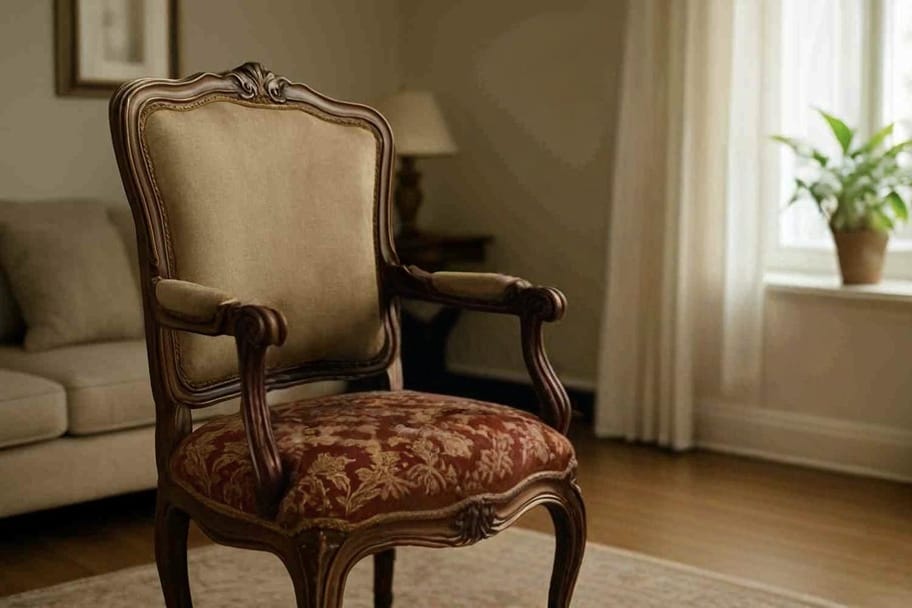How to Decide Whether to Repair or Replace Your Furniture Dubai

When your furniture shows signs of wear — sagging cushions, faded fabric, or a wobbly frame — it doesn’t always mean replacement. Repairing or reupholstering can restore comfort, update style, save money, and reduce waste, giving your furniture a fresh lease on life. With the right approach, even old or worn-out pieces can become the highlight of your home.
In this blog, we’ll help you decide whether to repair, reupholster, or replace your furniture. You’ll learn to assess its condition, consider quality and age, weigh repair costs, and factor in environmental and sentimental value. We’ll also cover how style and home decor influence your choice for a practical, stylish outcome.
Assess the Condition of Your Furniture
The first step is to evaluate how bad the damage really is.
Ask yourself these questions:
- Is the frame still sturdy and solid?
- Are the joints loose or broken?
- Is the upholstery torn, faded, or stained beyond cleaning?
- Are the cushions flat or losing shape?
If the structure is strong and only the surface looks worn, repairing or reupholstering is usually the best choice. A skilled upholsterer can bring it back to life with new fabric, padding, and polish — often making it look better than new.
Consider the Quality and Age of the Furniture
High-quality furniture — especially pieces made from solid wood or strong metal frames — is worth repairing. Older furniture was often built to last, using durable materials and craftsmanship rarely seen in mass-produced items today.
However, if your furniture is made of particle board, has a weak frame, or was originally inexpensive, replacement might be more practical. Reupholstering low-quality furniture can sometimes cost more than buying a new piece.

Evaluate the Cost of Repair vs. Replacement
Budget plays a huge role in this decision.
- Repairing: Upholstery and minor structural repairs are typically more affordable than buying new high-end furniture. You can also customize fabrics, colors, and textures to match your decor perfectly.
- Replacing: If repairs would cost more than 50–60% of a new item’s price, it may be wiser to replace it — unless it holds sentimental or antique value.

Getting quotes from professional upholsterers can help you compare the cost difference accurately before deciding.
Think About Environmental Impact
Repairing and reupholstering your furniture is an eco-friendly choice. Instead of sending old furniture to landfills, you give it a second life. Reusing strong frames and refreshing fabrics significantly reduces waste and carbon footprint.
Choosing to repair not only saves money but also supports sustainability — a growing priority for many households today. In fact, the UAE’s Circular Economy Policy 2031 aims to divert 75% of waste from landfills by 2030, highlighting why sustainable practices like reupholstery are so important.
Sentimental or Antique Value
Some pieces are priceless because of their history — maybe it’s your grandmother’s sofa, a vintage armchair, or a custom-made dining table. In such cases, repairing or restoring is the ideal solution. A professional restorer can preserve the original structure and style while upgrading comfort and durability.

Aesthetic Preferences and Home Decor
Sometimes, it’s not about damage — it’s about style. If your furniture doesn’t fit your home’s new look, you can give it a makeover instead of buying something new.
Changing fabric colors, patterns, or finishes can completely transform the appearance of a sofa, chair, or headboard.

Reupholstery offers endless design flexibility, while replacement limits you to available market styles.
When Reupholstery or Replacement Makes Sense
While replacing furniture is sometimes necessary, in many cases reupholstery is the best choice to restore comfort, style, and functionality without the cost of buying new.
Reupholstery is ideal when:
- The frame is sturdy and intact but the fabric or cushions are worn out.
- You want to update the style or color of your furniture to match your current decor.
- The furniture has sentimental or antique value that you want to preserve.
- You want a cost-effective and eco-friendly option that extends the life of your piece.

Replacement is necessary when:
- The frame is broken or warped beyond repair.
- Termite or mold damage is extensive.
- The structure feels unstable even after tightening.
- The furniture no longer fits your space or comfort needs.
Why Choose Topform?
When it comes to furniture upholstery, Topform stands out as a trusted name known for quality, craftsmanship, and reliability. Whether you’re deciding to repair or replace your furniture, our team ensures your pieces regain their comfort, style, and durability — all while saving you the cost of replacement.
Benefits of choosing Topform:
- Save money by restoring instead of replacing.
- Upgrade your furniture with a fresh, modern look.
- Extend the life and comfort of your favorite pieces.
- Customize designs to match your home’s style.
- Make a sustainable, eco-friendly choice.
Frequently Asked Questions (FAQs)
It depends on the piece. High-quality or antique furniture is usually cheaper to reupholster than to buy a similar-quality new one. However, for low-cost, mass-produced furniture, replacing may be more economical.
With proper materials and professional craftsmanship, reupholstered furniture can last 10–15 years or more, depending on usage and fabric quality.
Any furniture that has a strong frame or still feels comfortable and fits your space can be worth reupholstering. Sofas, chairs, and cushions that you love — whether they’re modern, vintage, or simply match your style — can easily be given a fresh look through upholstery. However, if the frame is weak or damaged beyond repair, replacement might be the better option.
Absolutely! You can update fabrics, colors, cushions, and trims to match your current interior style — giving your furniture a completely new look without buying new.
You can trust Topform Furnishing for all your reupholstery and furniture repair needs. With years of experience, a strong portfolio, premium fabrics, and expert craftsmanship, we provide customized solutions that restore comfort, style, and durability to every piece.